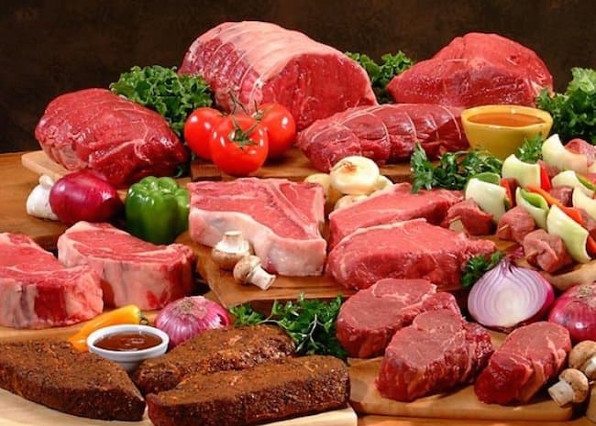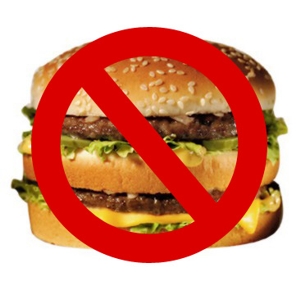We recently explored how how specific amino acids trigger the umami taste on our palates. Now, we take note of research that claims simply eating less of one specific amino acid may help us live longer, healthier lives. And there’s an obesity connection…
 Red Meat: The most heinous and insidious contributor of isoleucine to our diets.
Red Meat: The most heinous and insidious contributor of isoleucine to our diets.
The amino acid has been tagged as a particularly dangerous perp
in incidents of obesity, cancer and prostate disease.
What they did
A team led by Dr. Dudley Lamming, a professor and metabolism researcher at the University of Wisconsin School of Medicine and Public Health, has been looking at various components of the human diet. Recently, they tested the effects of the amino acid isoleucine on our overall anatomy and came up with some intresting, possibly ultra-important findings.
“We like to say a calorie is not just a calorie,” says Dudley Lamming, a professor and metabolism researcher at the University of Wisconsin School of Medicine and Public Health. “Different components of your diet have value and impact beyond their function as a calorie, and we’ve been digging in on one component that many people may be eating too much of.”
What they found
According to an abstract of the study report: “[The] new study in mice, published recently in the journal Cell Metabolism, showed that cutting down the amount of a single amino acid called isoleucine can, among other benefits, extend their lifespan, make them leaner and less frail as they age, and reduce cancer and prostate problems. All while the mice ate more calories.”
Wow! Is this perhaps, the ‘silver bullet’ science has been looking for to not only fight obesity but attack other ubiquitous health scourges? We’ll have to wait a while to see. It’s only in the earliest stages, in experiments on mice. But, as we’ve noted in past study reviews, mice have many biochemical similarities with humans. And what works in mice often works in humans, too.
The takeaway
“We can’t just switch everyone to a low-isoleucine diet,” Lamming says. “But narrowing these benefits down to a single amino acid gets us closer to understanding the biological processes and maybe potential interventions for humans, like an isoleucine-blocking drug.”
My take
Okay. Lamming’s team agrees that we need a certain amount of isoleucine in our diets to be healthy. In fact, it’s considered an essential nutrient: “[Isoleucine is] particularly important for physiological functions of the whole body, such as growth, immunity, protein metabolism, fatty acid metabolism and glucose transportation.”
My simpler observation is, the stuff would not be in our systems at all if we didn’t need it. But researchers also stress that virtually all of us are getting more than we need in our traditional diet. And obese people – who tend to eat more than average folks to start with – are getting even more of the critical amino acid.
Obesity a major issue
Other studies support the link between isoleucine and obesity. The Survey of the Health of Wisconsin showed that people vary in isoleucine intake, with leaner participants tending to eat a diet lower in the substance.
I was particularly interested in the observation by Lamming that mice fed a low-isoleucine diet ‘very quickly got leaner’, losing adipose, or belly fat. That’s always been the hardest kind of fat to lose.
Other important effects
In addition, mice that consumed low-isoleucine diets showed reduced incidence of cancer and prostate problems.
But most intriguing to me was the finding that male mice who ate less isoleucine lived up to 33 percent longer than their counterparts on a ‘standard’ diet. Female mice showed a more modest longevity gain of around 7 percent. Will reducing isoleucine intake turn out be the great leveller, raising men’s life expectancy closer to or above that of women?
Don’t expect a miracle pill
At least, not anytime soon. It could take a decade or more to get an isoleucine-reducing drug developed and approved for the market. Bur we can all watch our isoleucine intake by moderating our intake of common foods rich in the stuff. The worst offenders (highest in isoleucine) stack up like this:
- Beef (6 oz. / 170 g serving) = 192
- Chicken (6 oz. / 170 g serving) = 191
- Pork (6 oz. / 170 g serving) = 178
- Fish (6 oz. / 170 g serving) = 151 percent RDI (average over several fish varieties)
- Tofu & Derivatives (6 oz. / 170 g serving) = 117 percent DRI
- Beans & Lentils (6 oz. / 170 g serving) = 41 percent RDI
- Milk (8 oz. / 237 ml serving) = 30 percent RDI
- Seeds & Nuts (1 handful) = 21 percent RDI (average over several varieties)
- Cheese (1 oz. / 29 g serving) = 26 percent RDI
- Eggs (one Large) = 25 percent RDI
I can now see why diet and nutrition experts want us to limit our animal protein intake to just 4 oz. / 115 g. per serving!
Oh – And be aware that Cheese and Seeds & Nuts are bigger offenders than they may first appear in the above list. The servings quoted for them are deemed ‘typical’, but are really very small…
~ Maggie J.

